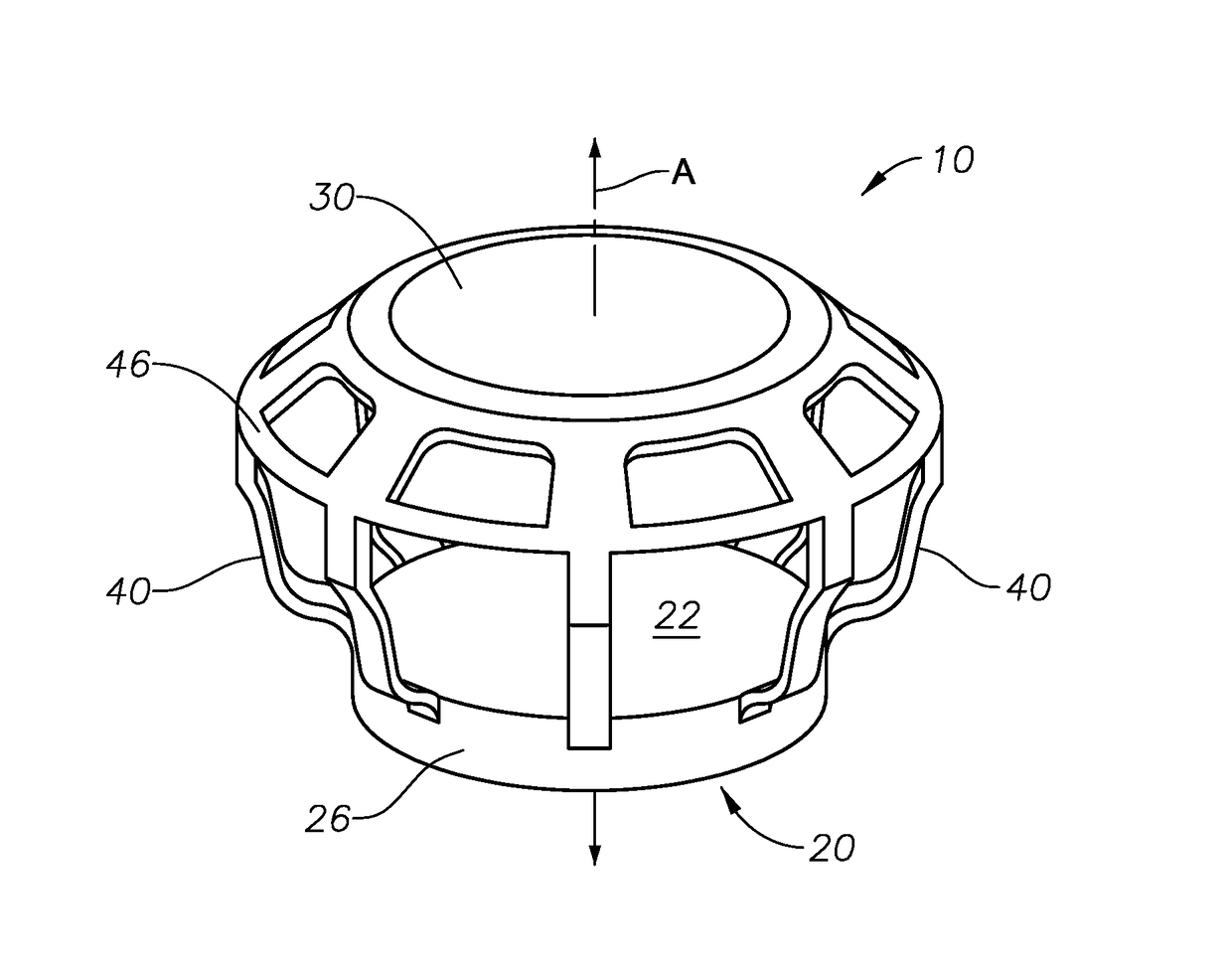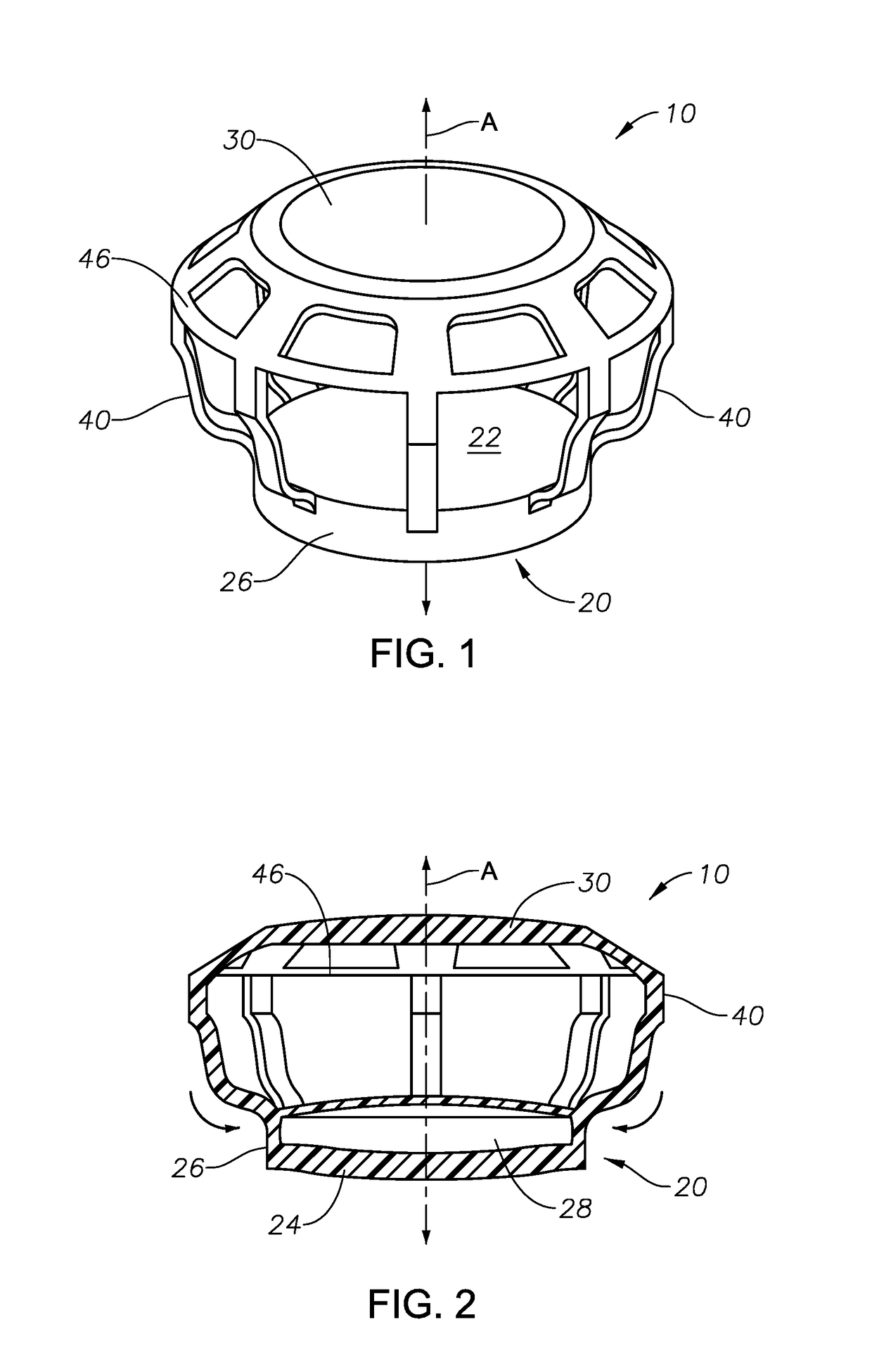Dual optic, curvature changing accommodative iol having a fixed disaccommodated refractive state
- Summary
- Abstract
- Description
- Claims
- Application Information
AI Technical Summary
Benefits of technology
Problems solved by technology
Method used
Image
Examples
Embodiment Construction
[0032]The present disclosure generally relates to an intraocular lens (IOL) configured to be implanted in the capsular bag of a patient and that can utilize the movement of the capsular bag to change the power of the IOL. With reference to FIGS. 1 and 2, an exemplary IOL 10 is depicted, according to certain embodiments of the present disclosure. As shown in FIG. 1, the IOL 10 generally comprises a fluid optic body 20 and a second optic body 30 separated a distance apart. A plurality of struts 40 extend between the fluid optic body 20 and the second optic body 30 and couple the fluid optic body 20 to the second optic body 30, thereby defining a central space. In certain embodiments, another lens (e.g., as a solid lens) may be disposed in this central space, as discussed in detail below. When the IOL 10 is implanted within the capsular bag of a patient's eye such that the fluid optic body 20 and second optic body 30 are disposed on the optical axis (A) (allowing light traversing the I...
PUM
 Login to View More
Login to View More Abstract
Description
Claims
Application Information
 Login to View More
Login to View More - R&D
- Intellectual Property
- Life Sciences
- Materials
- Tech Scout
- Unparalleled Data Quality
- Higher Quality Content
- 60% Fewer Hallucinations
Browse by: Latest US Patents, China's latest patents, Technical Efficacy Thesaurus, Application Domain, Technology Topic, Popular Technical Reports.
© 2025 PatSnap. All rights reserved.Legal|Privacy policy|Modern Slavery Act Transparency Statement|Sitemap|About US| Contact US: help@patsnap.com



